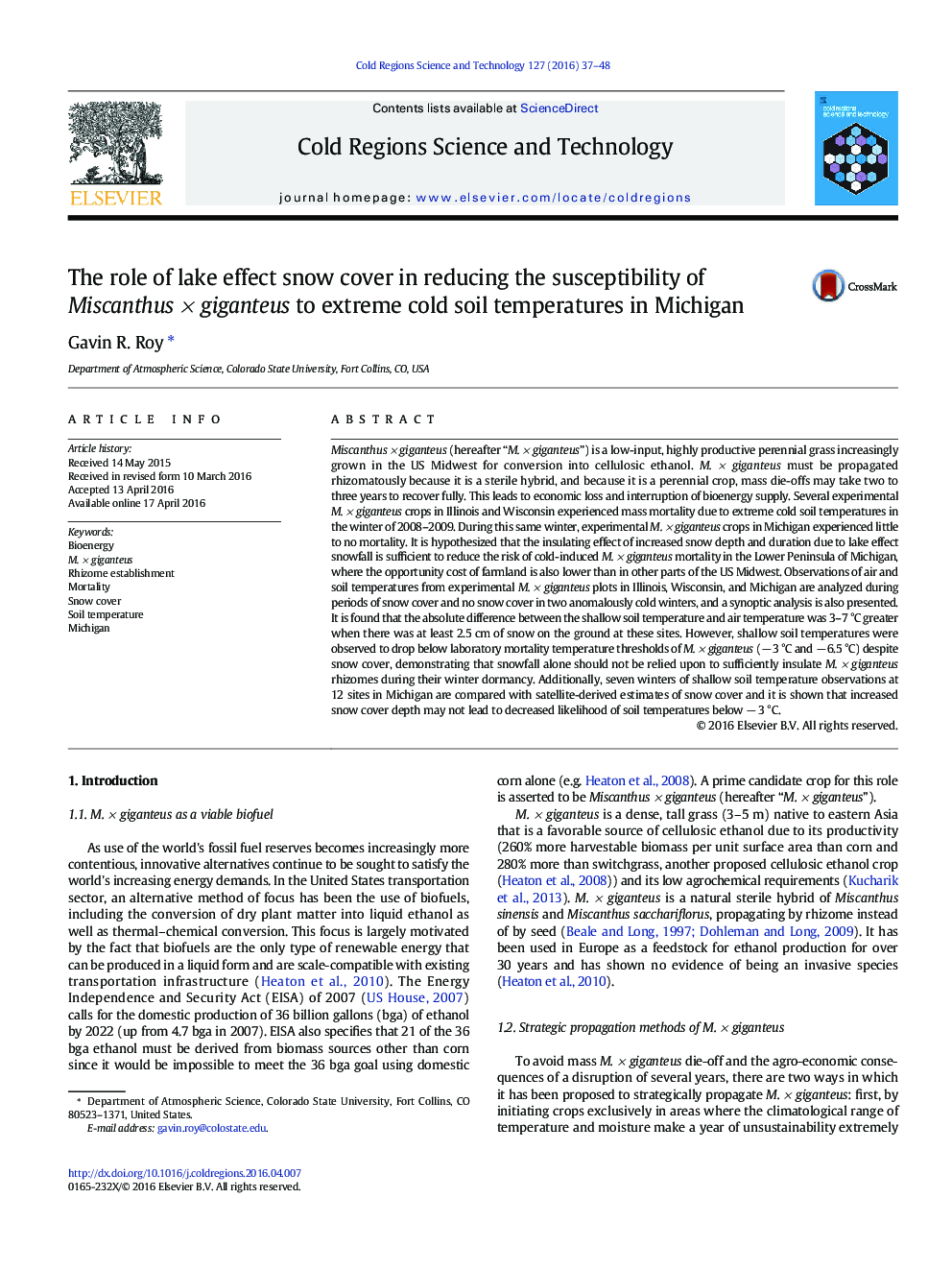| Article ID | Journal | Published Year | Pages | File Type |
|---|---|---|---|---|
| 4675646 | Cold Regions Science and Technology | 2016 | 12 Pages |
•Presence of snow cover insulates shallow soil layers over dormant rhizomatous crops.•Snow cover alone cannot protect Miscanthus rhizomes from cold-induced mortality.•Snow depth is a poor predictor of shallow soil temperatures in Michigan.
Miscanthus × giganteus (hereafter “M. × giganteus”) is a low-input, highly productive perennial grass increasingly grown in the US Midwest for conversion into cellulosic ethanol. M. × giganteus must be propagated rhizomatously because it is a sterile hybrid, and because it is a perennial crop, mass die-offs may take two to three years to recover fully. This leads to economic loss and interruption of bioenergy supply. Several experimental M. × giganteus crops in Illinois and Wisconsin experienced mass mortality due to extreme cold soil temperatures in the winter of 2008–2009. During this same winter, experimental M. × giganteus crops in Michigan experienced little to no mortality. It is hypothesized that the insulating effect of increased snow depth and duration due to lake effect snowfall is sufficient to reduce the risk of cold-induced M. × giganteus mortality in the Lower Peninsula of Michigan, where the opportunity cost of farmland is also lower than in other parts of the US Midwest. Observations of air and soil temperatures from experimental M. × giganteus plots in Illinois, Wisconsin, and Michigan are analyzed during periods of snow cover and no snow cover in two anomalously cold winters, and a synoptic analysis is also presented. It is found that the absolute difference between the shallow soil temperature and air temperature was 3–7 °C greater when there was at least 2.5 cm of snow on the ground at these sites. However, shallow soil temperatures were observed to drop below laboratory mortality temperature thresholds of M. × giganteus (− 3 °C and − 6.5 °C) despite snow cover, demonstrating that snowfall alone should not be relied upon to sufficiently insulate M. × giganteus rhizomes during their winter dormancy. Additionally, seven winters of shallow soil temperature observations at 12 sites in Michigan are compared with satellite-derived estimates of snow cover and it is shown that increased snow cover depth may not lead to decreased likelihood of soil temperatures below − 3 °C.
